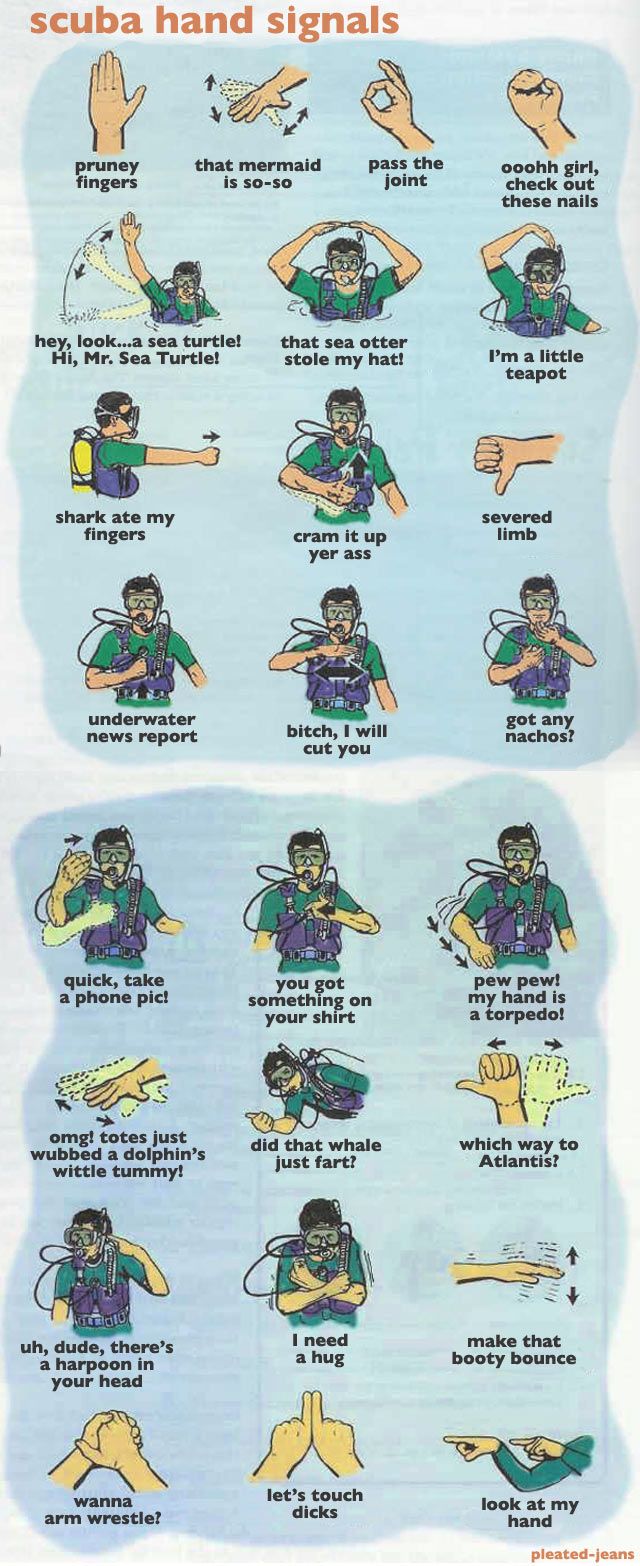Situation yesterday during a dive pertaining to remaining air signals. I was taught (PADI Instructor) 1,2,3,4,5 fingers up or 6,7,8,9 fingers down and circle for zero. I was with another PADI instructor for a leisure dive yesterday who "misinterpreted" my five fingers up to mean 1,000 as opposed to 500 because he "thought he saw me flash it twice." Long story short (and some additional issues later) he continued ahead of me while I needed to begin my safety stop and way back to the boat in a bit of a current. He must not have turned around until I was ascending because he didn't realize I was gone. I did the 1 minute under to search for him, then floated at the service for around 5 minutes before kicking back to the boat, then floated near the boat for another 5 minutes. He was no where in sight. He finally emerged after diving to the boat.
Needless to say, a lot of recommendations weren't followed, and we should have ensured we had the same hand signals, but fortunately I'm a very comfortable diver albeit new. This was the first time I had seen hand signals in flashes of five, so I didn't understand why he didn't interpret it correctly.
Had I been a new OW or uncomfortable diver, this hand signal misinterpretation could have been tragic and turned into panic diver or out-of-air situation quickly.
My question being, what is the PADI (and other organizations) standards in air signals? If there are several, then why is this not standardized?





